The rich strains of a trio playing the morin khuur, a stringed instrument traditionally made with strands of a horse’s tail, stirred the hearts of participants at the conference in Ulaanbaatar, Mongolia. The melody and rhythm of the morin khuur evoke images of the free-spirited horses native to the grassy steppes of eastern Asia, both revered and essential to Mongolian culture, and considered symbolic of the harmony between the soul and nature.
Surrounded by immense stretches of gentle hills and open grassland under a dome of blue sky, Ulaanbaatar is considered the coldest capital city in the world, with temperatures below freezing for the majority of the year. Inhabitants cherish the short span of summer, especially the months of July and August when it is the season for celebrating and enjoying the good weather.
Over 800 youth, hailing from all corners of this vast country, chose to spend some of this precious time at the conference in that city from 9 to 11 August, eager to discuss what it means to be a young person and what their role might be in contributing to the social and spiritual advancement of their neighbourhoods and villages.
In a country that in recent years has been experiencing rapid economic growth, and where social forces encouraging self-indulgence are increasingly directed at young people, the gathering was striking for its high aims—such as learning to not only be concerned with one’s own well-being but to work with others for the welfare of all.
“We understood that unity does not only mean that we don’t fight, but that all of us walk in the same direction with a common purpose.”
A participant at the conference
“If we strive towards the betterment of society together, we will be able to correct social ills and create a new civilization,” one youth said, enamoured by the profound ideas discussed at the conference.
With a sacrificial attitude, members of the community in Ulaanbaatar worked hard to make the arrangements to welcome youth from other parts of the country. A large sports complex was the only building in the city that was big enough to host all the participants.
Groups from different neighbourhoods and villages of Mongolia prepared and travelled together, an act reminiscent of their nomadic heritage but also reflective of the community-building process taking root in their country. As a result of intensive efforts during the past year to widen the circle of those committed to the transformation of society, one neighbourhood in the town of Murun, in the Khuvsgul province, was able to send 94 young people to the conference. There, with increased enthusiasm and confidence, this group made plans both to continue inviting others in their own area to join them, and to help start activities in a neighbouring locality.
“I understand that we do not walk the path of service alone, but in the company of many other people. They should become a group, and each village and neighbourhood can have such a group of people who learn how to cooperate and support one another,” one youth said.
The content of the materials stimulated the participants’ thinking, uplifted their thoughts, and provided them with the words to describe the aspirations in their hearts. The youth were eager to explore the characteristics of their time of life, identifying that they have a collective power to act that needs to be dedicated to making positive changes in their communities. They learned about the nobility of the soul, the extraordinary potential of youth as agents of change, the burgeoning capacities of younger youth, and ways of overcoming difficulties they would encounter in their efforts.
A young woman who recently became involved shared her understanding of how older and younger youth could encourage and support one another: “We understood the importance of steering adolescents to the right path as these youth will, in turn, guide the next generation to contribute to social well-being.”
Thinking of the friends who could not come for the conference, the participants decided to have 26 smaller gatherings with the help of their workshop facilitators and members of the institutions, at which they would share the conference materials with these youth and invite them to enter into the conversation.
The study of the materials had a deep impact on the participants’ understanding of unity. “We understood that unity does not only mean that we don’t fight, but that all of us walk in the same direction with a common purpose,” one young person shared. Another explained, “The attitudes and abilities that help us in walking together in unity are those of showing patience, respecting each other, and truly listening to one another.”
The youth and facilitators of the workshop groups reflected that their capacity to listen, understand one another, and become true friends had increased markedly during the three days they were together. On the last evening of the conference, the atmosphere was so uplifting that the time allotted for artistic performances was extended by an hour and a half. So sweet, too, were the friendships formed that the youth did not want to part, hugging one another tearfully as they said goodbye.
One youth reflected, “When we serve society together as a group, our view of the world changes and we are able to walk the path of service. Therefore, as friends we can contribute to the building of a new civilization.”
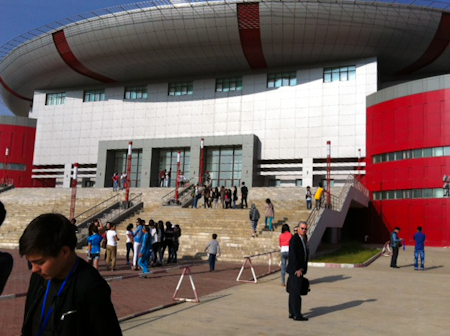
The conference took place at a large sports centre near the airport
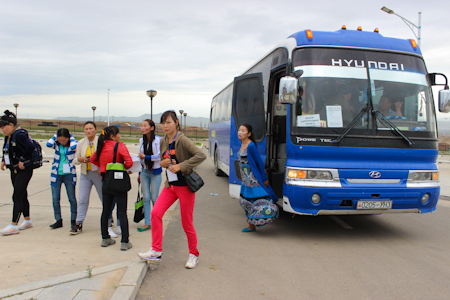
Participants came to the conference from all corners of the vast country
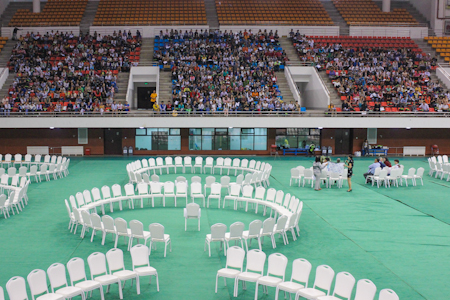
Participants assembled in the large hall of the sports complex
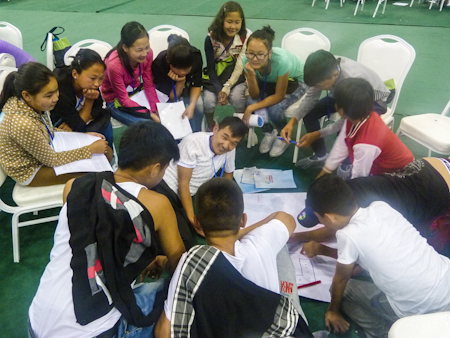
Study of the conference materials stimulated the thinking of the youth
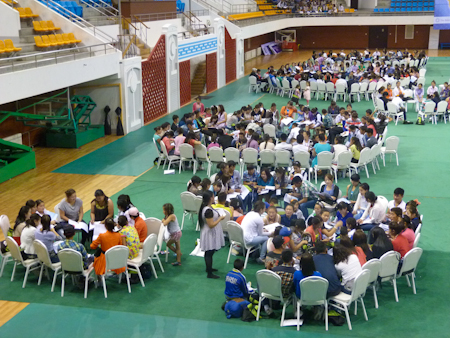
Small group sessions included consulting on continuing efforts to better their communities
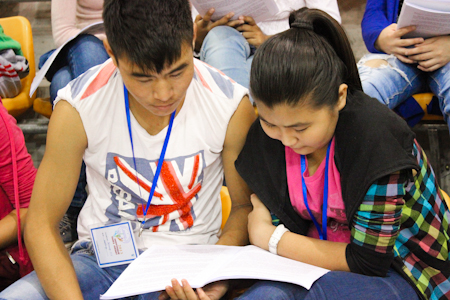
Participants reading a section of the materials together
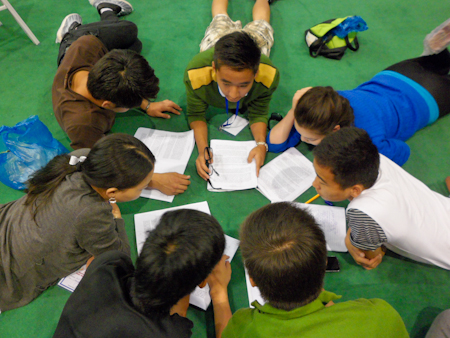
Group study of the materials stimulated thoughtful reflection
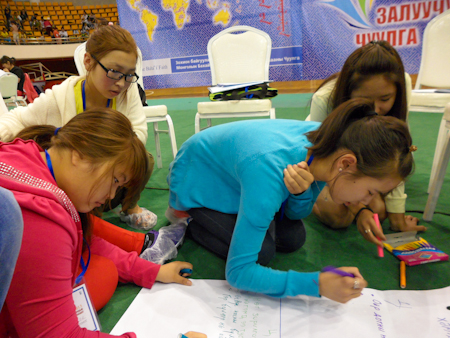
Youth used a variety of methods to share what they had learned during the different sessions
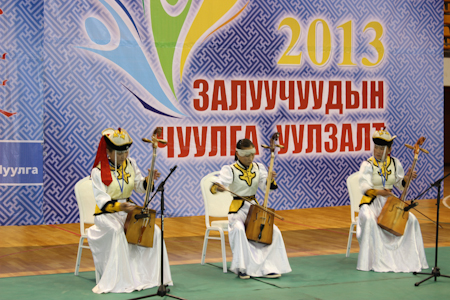
The beautiful music of the morin khuur, the Mongolian national instrument, uplifted the hearts of all
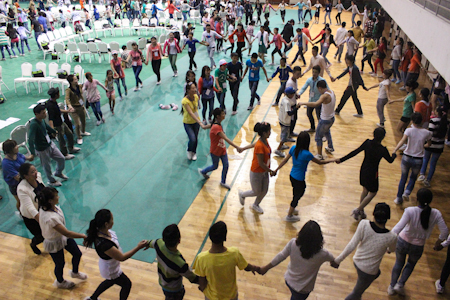
Arts such as dance expressed the bonds of joyful fellowship strengthened among the youth during their time together